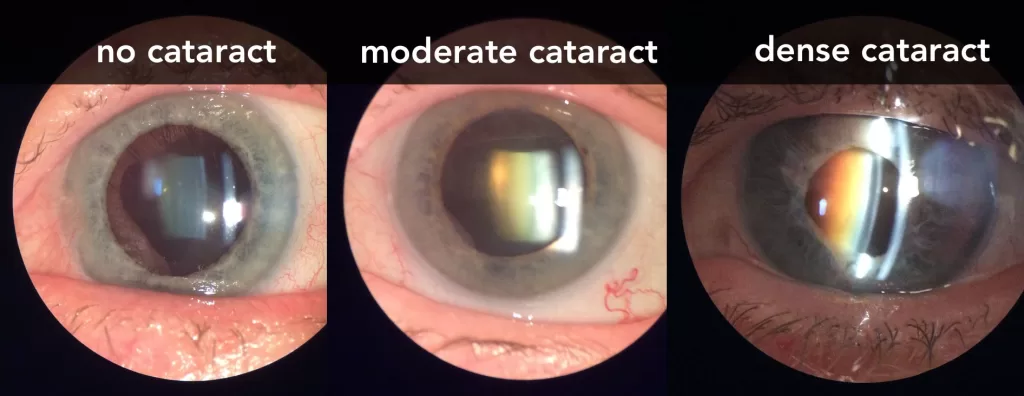A cataract is the clouding of the normally clear lens of the eye, thus one feels like they are looking through a frosty window. As a result its difficult for one to carry out their daily activities, especially at night. Cataracts may affect a small part of the eye’s lens which, one may not be aware of. As the cataract grows and gets large it clouds more of the lens, thus distorting light from passing through the lens.
How does a cataract form?
A lens is found behind the colored part of the eye known as the iris. It focuses light passing through the eye thus producing a clear sharp image to the retina. As one ages, the lens in the eye becomes less flexible, less transparent, and thicker. The proteins and fibers in the lenses break down and clump together making the lenses cloudy. As the cataract continues to develop, the clouding becomes more denser. Cataract scatters and blocks light from passing through the lens thus preventing clear, defined images from reaching the retina which makes vision blurred.
Causes of cataract.
- Injury to tissues of the lens makes proteins and fibers in the lens break. This leads to a cloudy vision.
- Inherited genetic disorder.
- As a result of other eye conditions such as past surgery.
- Long-term use of steroid medication.
Symptoms.
- Cloudy or blurred vision.
- Vision difficulty especially at night.
- An experience of double vision in one eye.
- Sensitivity to light.
- Frequent changes in eyeglasses prescription.
- One sees “halos” around lights.
- Yellowing of colors.
- The need for brighter light when doing activities.
Types of cataracts.

- Cortical cataracts- begin as whitish, wedge-shaped opacities or streaks on the outer edges of the cortex lens. The streaks extend to the center where it interferes with light passing through the centre.
- Nuclear cataracts– this is a cataract that affects the center of the lens.
- Posterior subcapsular cataracts– affect the back of the lens. It interferes with reading vision, causes glare, or reduces one’s vision when in bright light.
- Congenital cataracts are where one can be born with it or develop soon after birth.
Risk factors.
- Diabetes.
- Smoking.
- Obesity.
- High blood pressure.
- Increase of age.
- Previous eye surgery.
- Exposure to bright light.
- Previous injury of the eye.
- Long-term use of corticosteroid medication.
- Excessive use of alcohol.
Prevention of cataract.
- No smoking.
- Regular eye examination.
- Eating a healthy diet that has plenty of fruits and vegetables.
- Proper management of other health problems e.g. diabetes.
- Reduction of alcohol consumption.
- Wearing sunglasses to protect the eyes from ultraviolet light when outside.
Diagnosis.
- Visual acuity test- where an eye chart is used to measure how well one can read a series of letters.
- Retinal exam where eye drops are used to dilate the pupils.
- Applanation tonometry- used to measure the fluid pressure in the eye.
- Slit lamp examination – where the structures at the front of the eye are examined under magnification using a microscope known as a slit.
Treatment.
- Surgery is used to remove cataracts.
- List of Accredited Private Universities in Kenya
- Egerton university, fees, location, courses.
- How is The Lenana Boy school and location?
- What is the history of Kenyatta University?
- List of best private primary schools in Kirinyaga County.
- Bay head elementary school history, enrolment, programs offered.
- A list of special secondary schools, and contacts.